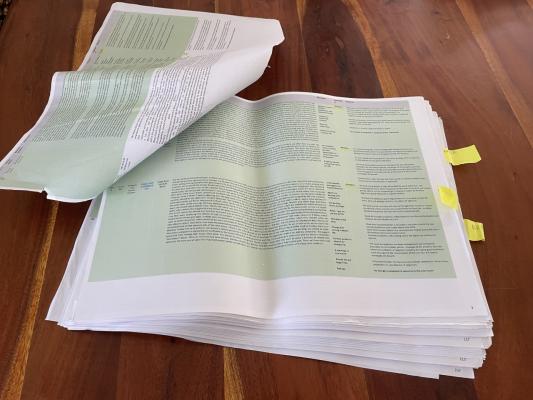Last week Ingrid Jackson lamented Noosa Council’s journey towards the regulation of STAs through the latest draft of the proposed local laws.
This draft is the product of two lengthy public consultations and an extraordinary amount of work by Council staff.
In this recent round, an astonishing 615 responses were submitted by the public, community groups and professional organisations. What does this look like? It is 273 A3 pages. Each of these submissions was documented, noted, and considered.
Furthermore, to facilitate the implementation of the local laws, Council commissioned the reputable AEC Group to perform a Cost Benefit Assessment of the present draft of the local laws. It can be said that Council has put an enormous effort into this draft. It is clear there has been due diligence, expert advice, and community consultation.
Despite all this, Ms Jackson attempts to confuse the issues and throw doubt upon Council’s competence. For example, she writes, “In summary, restricting short-term accommodation will not …ensure amenity.“ She blames the obvious loss of amenity on “Chronically ill-behaved owner-occupiers and permanent tenants.“ She further states, “Bad neighbours are not a short-term accommodation issue; they are being used as an excuse.“ Here she tries to reconfigure the obvious problem caused by STAs, which is a well-documented, worldwide phenomenon, and shift the blame onto local residents and ratepayers.
Her argument that local residents are the cause of the loss of amenity in our neighbourhoods is patently absurd and insulting. Please! And this is just one of the many lines of hogwash in the Soapbox article.
Fortunately, the Cost Benefit Assessment brings clear facts to the table:
1. 14 per cent of STA owners live in Noosa Shire, 35 per cent live in Queensland, 45 per cent live interstate and 6 per cent reside overseas. In other words, 86 per cent of STA owners live outside our shire!
2. The potential beneficiaries within Noosa from the proposed local law include 19,600 residential properties housing an estimated 26,525 persons. Without effective local laws, many of them will continue to suffer from anxiety, sleep deprivation, stress, and safety issues by the inundation of STAs.
With the drafting of the new local laws, council staff and the majority of councillors are representing the residents, especially those who have had their lives disrupted by STAs.
When you read the ramblings from Ms Jackson, it appears the goal is to confuse the issues and cast doubt on Council’s competence. That could suit those who would prefer deregulation of STAs and the destabilising of the Noosa Plan 2020, which protects our standard of living and the uniqueness of Noosa. I believe the new local laws and the Cost Benefit Assessment have formally recognised the suffering and loss of standard of living in our local communities. The report shows that implementing the local laws will clearly benefit those impacted residents.
The Queensland Government is looking to Noosa to lead the way in formulating a solution to the problems caused by Short Term Accommodation. State governments themselves are confounded by this issue. Furthermore, other states as well as governments worldwide are monitoring Noosa council’s attempts to deal with the STA crisis.
I hope Noosa Council’s diligent efforts to maintain residential amenity, whilst also supporting tourism and servicing visitor demand, prove that the right balance can be struck.









